While walking the streets of New York, nearly every person I see is staring down at a screen, fully engaged with digital devices. Through technology, our world has become incredibly connected; yet disconnected at the same time. There is comfort in being able to communicate without regard to time or distance but, somehow all this personal contact seems so impersonal, so two dimensional, so unnatural. Are we all truly eager to replace all human interaction with virtual realities?
Digital Devices for ASL Interpretation
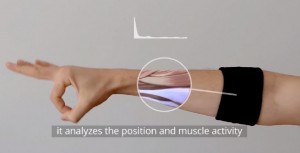
Last week, the internet was buzzing with news of a new device called Google Gesture, a wristband which could reportedly translate sign language into spoken language in real time. The viral clip turned out to be just a concept video released by a group of marketing students in Sweden, but it stirred up some interesting discussions about the role of technology in cross-cultural communication.
Although most deaf/HoH are content with their lives the way they are, it’s nice to imagine a world where everyone is able to communicate seamlessly, and deaf people are not excluded from certain spaces. Over the past 30 years, technology has been viewed as a solution to provide deaf individuals greater opportunity.
The most well known device, the cochlear implant, is an electronic device which allows the deaf wearer to “hear” by amplifying sounds and stimulating the auditory nerve. Cochlear implants require invasive surgery, are very costly, and do not allow the wearer to hear exactly the same way a hearing person does — sounds are often muddied, robotic, and can be difficult for the brain to process. Cochlear implants are not perfect, and they create a cultural grey area for wearers, who sometimes feel like they are neither Deaf nor hearing. Still, over the past few decades these devices have provided thousands of wearers with the ability to hear sounds they would otherwise not have been able to hear, and live the kind of lives they so choose to live. Having options is a positive thing.
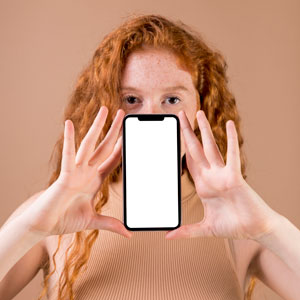
Text messaging was one of the greatest communication revolutions for the Deaf community. Before the widespread use of cell phones, deaf calls had to be made using either a Text Telephone (TTY) or a Telecommunications Relay Service (TRS). TTY allows deaf individuals to type messages, which are then sent over a telephone line to the other party as text. TTY requires both the sender of the message and the receiver to have a TTY device, while TRS involves the hearing party communicating through an operator, who then types responses for the deaf person to read on their TTY. Relay operators were often unfamiliar with Deaf culture, therefore unable to mediate terminology that did not translate directly. Although definitely a useful invention, TTY/TRS can be inaccurate, cumbersome, and was never a very simple solution.
Speech-to-text services, such as Communication Access Realtime Translation (CART), have emerged in the past decade as a “real-time captioning” solution. Using this method, spoken words are transcribed into text, either by a live person or by a computer program. For one-on-one situations where there are no other options available, speech-to-text options are certainly better than nothing. This is an excellent option for hard of hearing individuals or people for whom ASL is not their native language. But the truth is that the technology is unable provide accurate translation and contextual interpretation, meaning messages can easily be misunderstood. Any periphery noise, secondary speakers, or unusual inflections can easily lead to confusion. In addition, speech-to-text does not provide a way for deaf sign language users to respond, therefore only facilitates one way communication.
The Deaf community were among the first adopters of video chat technologies. Services such as Skype, Google Hangout, and FaceTime have made deaf-to-deaf phone calls infinitely simpler. I can’t even tell you how lovely it is to be able to video chat with my family members using ASL! For conversations between deaf and hearing people, Video Relay Interpreting offers a simple and cost-effective solution. Remote video interpreters are actually certified ASL interpreters who have knowledge of deaf culture, interpreting ethics, and how to mediate any cross-cultural misunderstandings. VRI is certainly convenient, and this technology offers deaf people more opportunity to engage with hearing entities. At the end of the day, however, VRI is designed for brief one-on-one dialogues, since remote interpreters are unable to see or hear every person in the room when they are speaking.
 As new devices improve all areas of our lives, making communication and information more accessible than ever, will we see a shift away from using live interpreters? In my opinion, interpreting a person’s words is a very delicate and human process. As revolutionary as emerging technologies might be, high quality ASL interpreters simply can not be replaced by a machine. Facial expressions, body language, tone, and context are all very important aspects of dialogue. In fact, research suggests that anywhere between 60% and 90% of interpersonal communication is nonverbal, which means words alone rarely covey the full message. This is specifically true of signed languages.
As new devices improve all areas of our lives, making communication and information more accessible than ever, will we see a shift away from using live interpreters? In my opinion, interpreting a person’s words is a very delicate and human process. As revolutionary as emerging technologies might be, high quality ASL interpreters simply can not be replaced by a machine. Facial expressions, body language, tone, and context are all very important aspects of dialogue. In fact, research suggests that anywhere between 60% and 90% of interpersonal communication is nonverbal, which means words alone rarely covey the full message. This is specifically true of signed languages.

American Sign Language is not a direct translation of English, it is a language all it’s own, with unique grammar, prose, and syntax. Deaf culture has it’s own humor, slang, and turns of phrase. ASL interpreters serve as both language and cultural interpreters. We bridge the social gaps, working to ensure deaf consumers have full access to any spoken English situations they choose. In a noisy environment, or when speakers are using ambiguous terminology, a live interpreter can mediate and provide understanding for all parties.
Technology has improved deaf access in so many ways, but software and screens can never fully replicate the feel of a conversation. They can not comprehend irony, translate sarcasm, or convey emotion the way a live interpreter can. New devices will continue to make the lives of deaf Americans easier, and for this we should all be grateful! When it comes to really communicating between the deaf and hearing worlds, however, no device can replace the human element of a professional ASL interpreter.
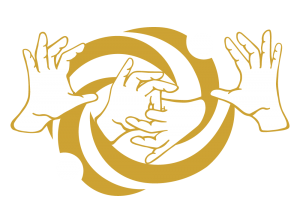



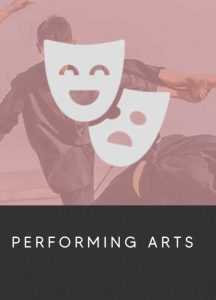

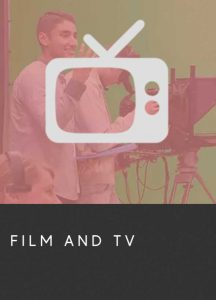





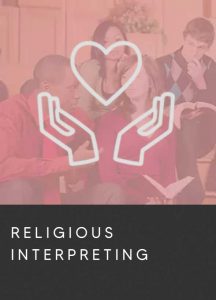
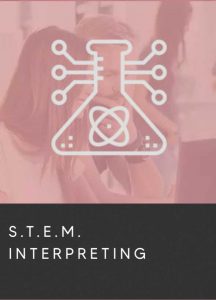
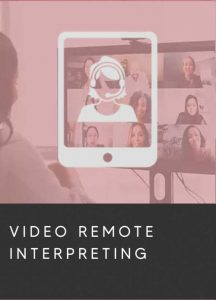
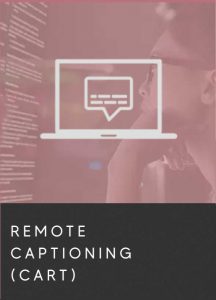

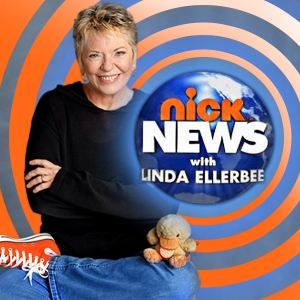 The pediatrician just informed you that your child is profoundly deaf.
The pediatrician just informed you that your child is profoundly deaf.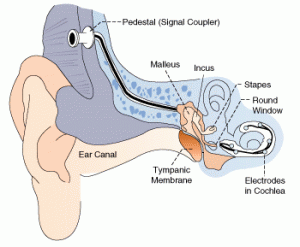 ome families choose to assimilate their child to a hearing lifestyle by implanting a device called a cochlear implant into the skull, which stimulates the auditory nerve and allow the brain to “hear.” Sammy is a CI recipient from a hearing family who jokingly refers to herself as “part robot.” She was not born deaf, but her hearing deteriorated throughout childhood and, at 12 years old, she made the choice to have CI surgery. According to Sammy, her parents presented the pros and cons, and she strongly feels a CI was the right choice for her. She attends school with all other hearing students and plays on a basketball team, insisting she doesn’t need to know ASL because she can hear. Cici also comes from a hearing family, she lost her hearing as a baby. Her parents elected to send her to a school for deaf children that focuses on teaching English and oral communication, so she never learned any ASL. At 5 years old she received her CI. “It was hard to learn to speak,” she says, but she feels very grateful that she did because it allows her to communicate with her family and non-deaf friends. Cici is a ballet and tap dancer who feels that deafness is a disability that her CI and hearing aid help her overcome.
ome families choose to assimilate their child to a hearing lifestyle by implanting a device called a cochlear implant into the skull, which stimulates the auditory nerve and allow the brain to “hear.” Sammy is a CI recipient from a hearing family who jokingly refers to herself as “part robot.” She was not born deaf, but her hearing deteriorated throughout childhood and, at 12 years old, she made the choice to have CI surgery. According to Sammy, her parents presented the pros and cons, and she strongly feels a CI was the right choice for her. She attends school with all other hearing students and plays on a basketball team, insisting she doesn’t need to know ASL because she can hear. Cici also comes from a hearing family, she lost her hearing as a baby. Her parents elected to send her to a school for deaf children that focuses on teaching English and oral communication, so she never learned any ASL. At 5 years old she received her CI. “It was hard to learn to speak,” she says, but she feels very grateful that she did because it allows her to communicate with her family and non-deaf friends. Cici is a ballet and tap dancer who feels that deafness is a disability that her CI and hearing aid help her overcome. Last year, audiences watched in disbelief as the South African sign language interpreter for Nelson Mandela’s memorial service earned the nickname “the fake interpreter.” Insulted, but not entirely surprised, the global deaf community used this public example to bring attention to an unfortunately common problem. The agencies which provide interpreters, even for large televised events, aren’t always looking out for the best interest of the communities they serve.
Last year, audiences watched in disbelief as the South African sign language interpreter for Nelson Mandela’s memorial service earned the nickname “the fake interpreter.” Insulted, but not entirely surprised, the global deaf community used this public example to bring attention to an unfortunately common problem. The agencies which provide interpreters, even for large televised events, aren’t always looking out for the best interest of the communities they serve. When interpreting agencies assign unqualified interpreters to jobs, they are denying equal access– it happens at hospitals, police stations, and court rooms alike. From the very start of our careers, interpreters should aware that these agencies are unethical, and that it is our professional responsibility to ensure access for the deaf is provided.
When interpreting agencies assign unqualified interpreters to jobs, they are denying equal access– it happens at hospitals, police stations, and court rooms alike. From the very start of our careers, interpreters should aware that these agencies are unethical, and that it is our professional responsibility to ensure access for the deaf is provided.
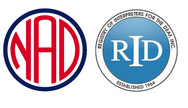 Research agencies to ensure they adhere to RID/NAD standards. The Registry of Interpreters for the Deaf (RID) is a professional organization which strives to provide consistent and ethical sign language interpreters. The National Association of the Deaf (NAD) is a civil rights organization by and for deaf people, representing the interest of deaf and hard of hearing individuals across the United States. Together RID and NAD have developed a
Research agencies to ensure they adhere to RID/NAD standards. The Registry of Interpreters for the Deaf (RID) is a professional organization which strives to provide consistent and ethical sign language interpreters. The National Association of the Deaf (NAD) is a civil rights organization by and for deaf people, representing the interest of deaf and hard of hearing individuals across the United States. Together RID and NAD have developed a 
 Before you sign a contract with any agency, be sure you read it very thoroughly and that you agree to the terms. If you find any questionable items in the contract, bring it back to the agency to discuss how your needs can be met. Look for the following items: a cancellation policy that ensures pay for the interpreter if the assignment is cancelled without 24-48 hours notice; a policy that states payment will be made within 14-45 days of an assignment; and pay that follows the cost of living standards for your area. Whether you live in a city or rural area has a big impact on your income. Learn the standard rates for non-certified and certified ASL interpreters in your city, and seek out an agency that provides all interpreters a fair hourly wage.
Before you sign a contract with any agency, be sure you read it very thoroughly and that you agree to the terms. If you find any questionable items in the contract, bring it back to the agency to discuss how your needs can be met. Look for the following items: a cancellation policy that ensures pay for the interpreter if the assignment is cancelled without 24-48 hours notice; a policy that states payment will be made within 14-45 days of an assignment; and pay that follows the cost of living standards for your area. Whether you live in a city or rural area has a big impact on your income. Learn the standard rates for non-certified and certified ASL interpreters in your city, and seek out an agency that provides all interpreters a fair hourly wage.

 As
As 
 When interviewing for a job, you only get one chance at a good first impression. You try to wear the right clothes, mentally prepare, and hope you have all the right answers. But what if none of that mattered? What if you didn’t get the job because of the color of your eyes? Or because you were too tall? In 2014, this kind of hiring discrimination might sound absurd, but for deaf job candidates it is a difficult reality.
When interviewing for a job, you only get one chance at a good first impression. You try to wear the right clothes, mentally prepare, and hope you have all the right answers. But what if none of that mattered? What if you didn’t get the job because of the color of your eyes? Or because you were too tall? In 2014, this kind of hiring discrimination might sound absurd, but for deaf job candidates it is a difficult reality.
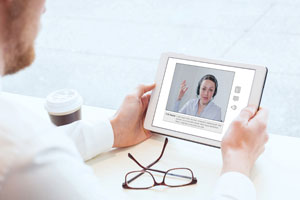
 Picture this: you are a little kid growing up, constantly discovering incredible new things about the world. Now imagine being surrounded every day by people who do not talk to you, tell you stories, or answer your millions of questions. These people are your own parents and siblings. You all live in the same home, yet they hardly communicate with you. They are not able to teach you, guide you, or to provide comforting words when you need them. In fact, they mostly avoid you. This is the experience of many deaf children.
Picture this: you are a little kid growing up, constantly discovering incredible new things about the world. Now imagine being surrounded every day by people who do not talk to you, tell you stories, or answer your millions of questions. These people are your own parents and siblings. You all live in the same home, yet they hardly communicate with you. They are not able to teach you, guide you, or to provide comforting words when you need them. In fact, they mostly avoid you. This is the experience of many deaf children. So, instead of accepting the perfect gift they have been given and embracing the opportunity to explore deaf communication, hearing parents might immediately label their beautiful deaf newborn as defective. They might hunt for a way to “fix” their baby, or try teaching their child to communicate using sound like “normal” people. Or maybe they simply abandon hope that they’ll ever be able to relate to their deaf child at all. This truly breaks my heart.
So, instead of accepting the perfect gift they have been given and embracing the opportunity to explore deaf communication, hearing parents might immediately label their beautiful deaf newborn as defective. They might hunt for a way to “fix” their baby, or try teaching their child to communicate using sound like “normal” people. Or maybe they simply abandon hope that they’ll ever be able to relate to their deaf child at all. This truly breaks my heart. Growing up the only deaf person in your household can be extremely isolating. If your family chooses not to learn sign language, it is hard to express yourself comfortably. For my mother, the opportunity to communicate with her parents and siblings just felt like it came too late. After a lifetime of feeling excluded from your own family, believing they never really got to know you, how do you make up for lost time? What is there to talk about?
Growing up the only deaf person in your household can be extremely isolating. If your family chooses not to learn sign language, it is hard to express yourself comfortably. For my mother, the opportunity to communicate with her parents and siblings just felt like it came too late. After a lifetime of feeling excluded from your own family, believing they never really got to know you, how do you make up for lost time? What is there to talk about? Deafness doesn’t have to be isolating. Since I was raised in a deaf family, I can tell you: deafness is nothing to be afraid of! The ability to hear sound is not what makes a person whole. It is not what gives a person their personality. The ability to hear sound is not what determines a person’s intelligence, and it doesn’t have to limit one’s life. Perhaps not enough hearing people take note of the deaf community members living happy lives around them. There are plenty of successful business owners, artists, and athletes who use sign language to communicate.
Deafness doesn’t have to be isolating. Since I was raised in a deaf family, I can tell you: deafness is nothing to be afraid of! The ability to hear sound is not what makes a person whole. It is not what gives a person their personality. The ability to hear sound is not what determines a person’s intelligence, and it doesn’t have to limit one’s life. Perhaps not enough hearing people take note of the deaf community members living happy lives around them. There are plenty of successful business owners, artists, and athletes who use sign language to communicate. Sign language is the most natural form of communication for deaf people around the globe.
Sign language is the most natural form of communication for deaf people around the globe.  I have 10 years experience working with toddlers and I am professionally certified in all levels of ASL, including baby signs.
I have 10 years experience working with toddlers and I am professionally certified in all levels of ASL, including baby signs. 




